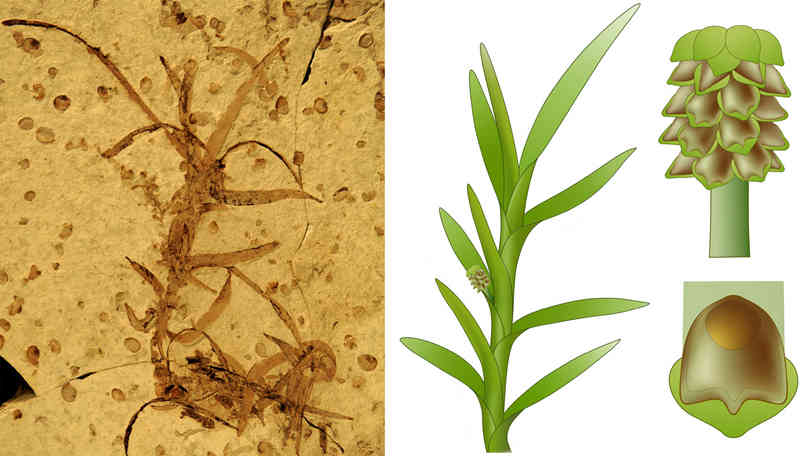
Left: Type specimen of Yuhania daohugouensis. Right: Reconstructions of partial plant, aggregate fruit, and fruit/carpel of Yuhania daohugouensis.
Despite increasing claims of pre-Cretaceous angiosperms, whether there really are angiosperms in the Jurassic is apparently still an open question for many people before further evidence is available. This question can only be answered by studying more Jurassic plant fossils.
Recently Dr. WANG Xin from Nanjing Institute of Geology and Palaeontology, Chinese Academy of Sciences reported a fossil angiosperm, Yuhania daohugouensis gen. et sp. nov, from the Middle Jurassic of Inner Mongolia, China. The plant includes connected stem, leaves, flowers, aggregate fruits, fruitlets, and seeds within fruitlets. The leaves are helically arranged along the curving stem, linear in shape, with 5-6 parallel veins. The aggregate fruit is pedicellate, composed of over 20 carpels/fruitlets helically arranged. Each fruitlet encloses a seed. The reproductive organs in various stages are found in the same plant, allowing us to understand the development of Yuhania.
The occurrence of Yuhania in the Middle Jurassic re-confirms the Jurassic history for angiosperms that has been suggested by other independent research and adds to the on-going study on the early evolution of angiosperms.
Reference: Liu, Z.-J., Wang, X., in press. Yuhania: A unique angiosperm from the Middle Jurassic of Inner Mongolia, China. Historical Biology.
